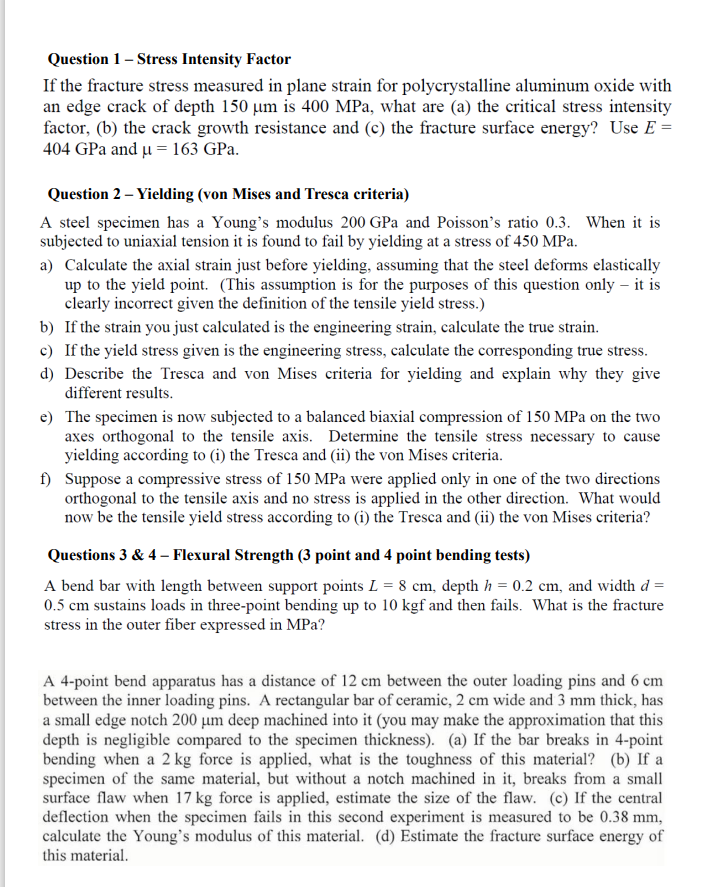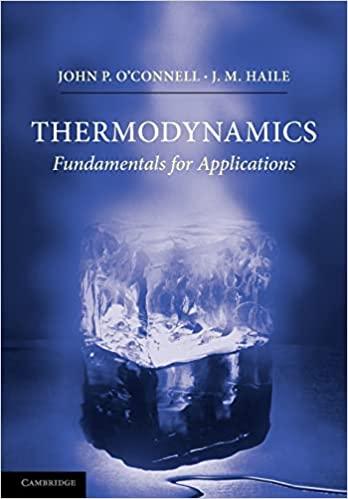
Question 1 - Stress Intensity Factor If the fracture stress measured in plane strain for polycrystalline aluminum oxide with an edge crack of depth 150 um is 400 MPa, what are (a) the critical stress intensity factor, (b) the crack growth resistance and (c) the fracture surface energy? Use E = 404 GPa and u = 163 GPa. Question 2 - Yielding (von Mises and Tresca criteria) A steel specimen has a Young's modulus 200 GPa and Poisson's ratio 0.3. When it is subjected to uniaxial tension it is found to fail by yielding at a stress of 450 MPa. a) Calculate the axial strain just before yielding, assuming that the steel deforms elastically up to the yield point. (This assumption is for the purposes of this question only it is clearly incorrect given the definition of the tensile yield stress.) b) If the strain you just calculated is the engineering strain, calculate the true strain. c) If the yield stress given is the engineering stress, calculate the corresponding true stress. d) Describe the Tresca and von Mises criteria for yielding and explain why they give different results. e) The specimen is now subjected to a balanced biaxial compression of 150 MPa on the two axes orthogonal to the tensile axis. Determine the tensile stress necessary to cause yielding according to (i) the Tresca and (ii) the von Mises criteria. f) Suppose a compressive stress of 150 MPa were applied only in one of the two directions orthogonal to the tensile axis and no stress is applied in the other direction. What would now be the tensile yield stress according to (i) the Tresca and (ii) the von Mises criteria? Questions 3 & 4 - Flexural Strength (3 point and 4 point bending tests) A bend bar with length between support points L = 8 cm, depth h = 0.2 cm, and width d = 0.5 cm sustains loads in three-point bending up to 10 kgf and then fails. What is the fracture stress in the outer fiber expressed in MPa? A 4-point bend apparatus has a distance of 12 cm between the outer loading pins and 6 cm between the inner loading pins. A rectangular bar of ceramic, 2 cm wide and 3 mm thick, has a small edge notch 200 um deep machined into it (you may make the approximation that this depth is negligible compared to the specimen thickness). (a) If the bar breaks in 4-point bending when a 2 kg force is applied, what is the toughness of this material? (b) If a specimen of the same material, but without a notch machined in it, breaks from a small surface flaw when 17 kg force is applied, estimate the size of the flaw. (c) If the central deflection when the specimen fails in this second experiment is measured to be 0.38 mm, calculate the Young's modulus of this material. (d) Estimate the fracture surface energy of this material







